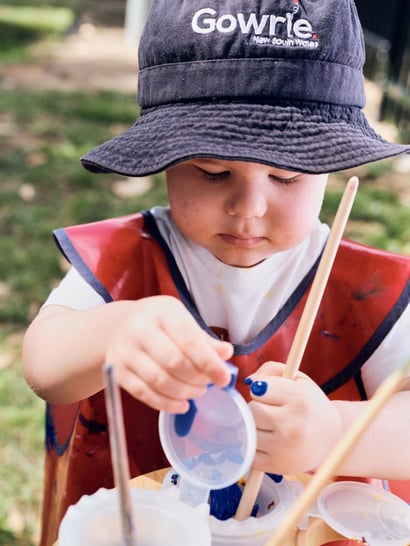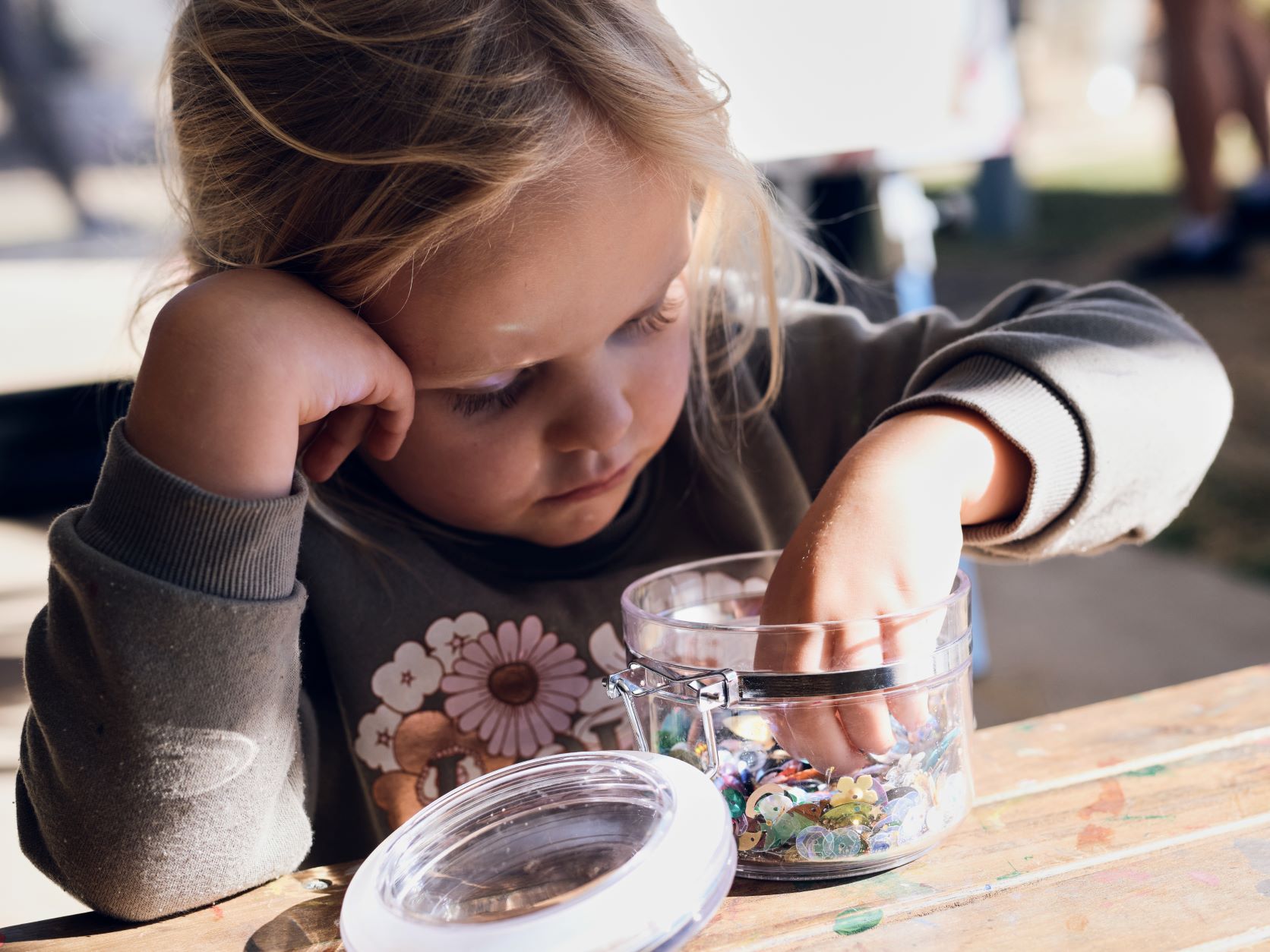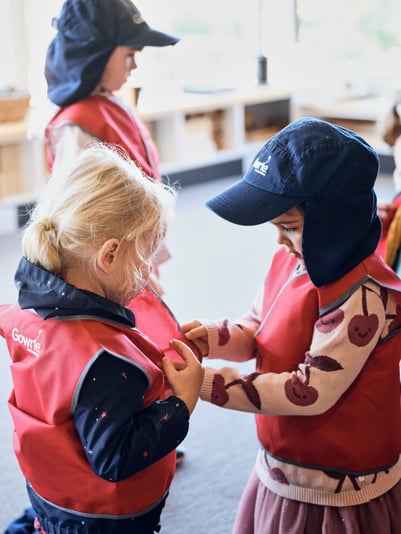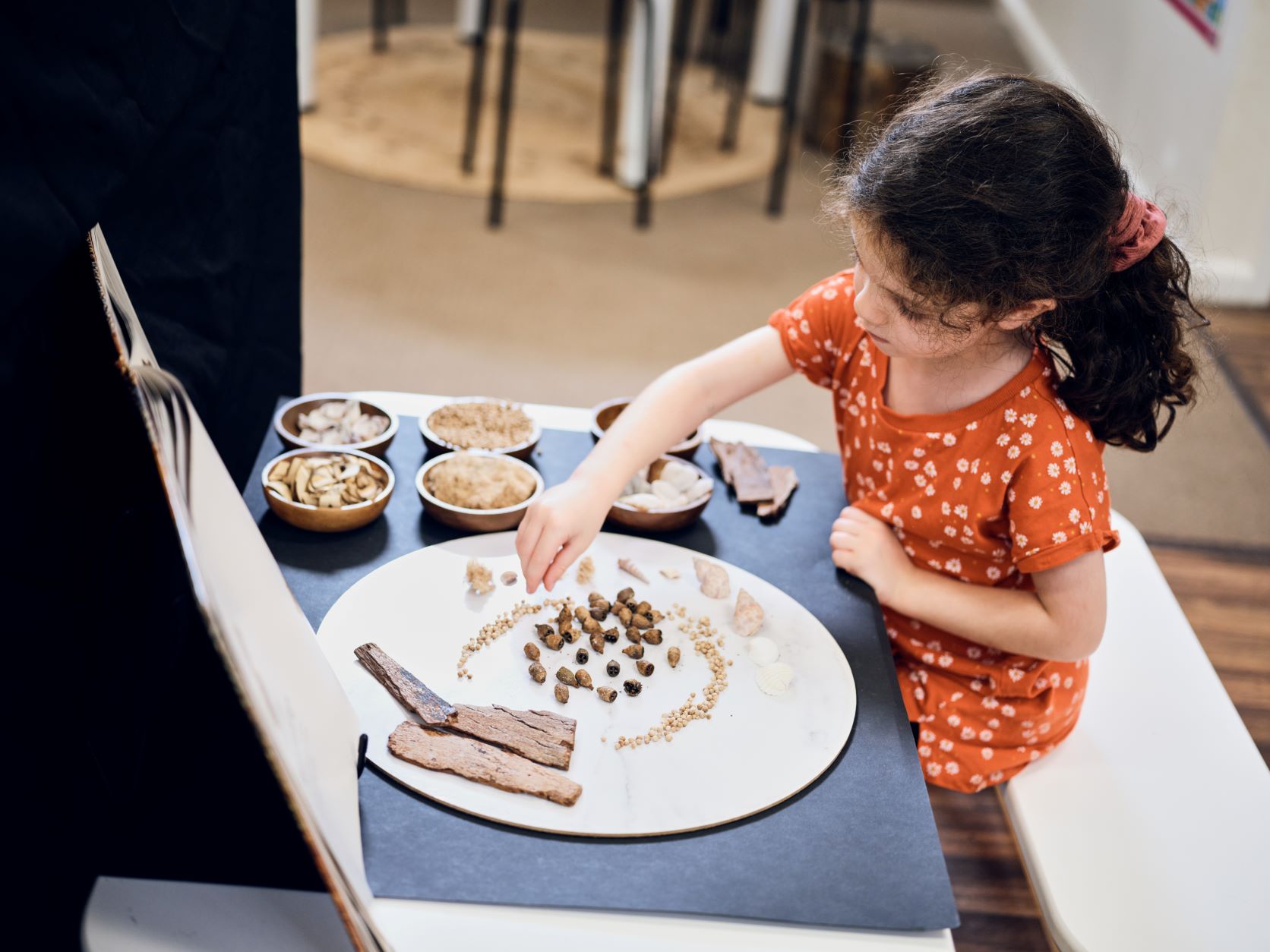Key Points
- Motor activities help children develop their coordination and muscle movements to perform tasks, from lifting small objects like play dough to running around and kicking a ball.
- Fine motor activities promotes control, coordination and concentration for smaller objects - usually using hands and fingers. Fine motor skills are useful for smaller movements such as clapping hands and playing with instruments.
-
Fine motor skills are important for preschoolers and toddlers to learn how to control their bodies through different movements, assisting in performing everyday activities in the process.
On this page
Fine Motor Activities for Preschoolers and Toddlers
Motor activities help children develop their coordination and muscle movements to perform tasks, from lifting small objects like play dough to running around and kicking a ball.
Motor activities are divided into two categories:
- Fine motor activities
- Gross motor activities
 Children at this stage of their development are curious about the world around them and often want to explore and mimic what they see. This is difficult if they don’t know how to move their little bodies, or engage in ways that promote exploration.
Children at this stage of their development are curious about the world around them and often want to explore and mimic what they see. This is difficult if they don’t know how to move their little bodies, or engage in ways that promote exploration.
Fine motor activities promotes control, coordination and concentration for smaller objects - usually using hands and fingers. Fine motor skills are useful for smaller movements such as clapping hands and playing with instruments.
Gross motor activities focus on larger muscles and movements with arms, torso and legs. Basic gross motor activities include crawling, which later develops into walking, running, jumping around, and throwing and kicking a ball.
Preschoolers and toddlers need to engage in both fine and gross motor activities to help them learn the foundational movement skills required for everyday life as they grow and develop.
Fine motor development can be learnt alongside gross motor development, as both are incremental for learning.
What Are Fine Motor Skills?
Fine motor skills foster the development of the smaller muscles in children’s hands and fingers. The muscle development helps them to hold, grasp, pinch, and grip objects.
Small movements such as picking up food and buttoning up clothes all lead to children being able to hold a pencil, and eventually write.
Fine motor skills are divided into three main categories:
1. Academics
- Using pencil skills, such as scribbling, drawing, colouring, writing
- Using scissor skills with safety scissors to cut
2. Play
- Puzzles and construction with lego, duplo, trains, puzzle pieces
3. Self Care
- Eating using utensils, opening and closing lunch bags
- Hygiene including brushing hair, cleaning teeth, going to the toilet independently
- Dressing including tying up shoes with velcro and shoelaces; and using buttons and belts
The coordination of holding objects and manipulating them in necessary movements is a key part of early childhood development, which studies showing a link between successful fine motor activities and developments in literacy and overall brain development.
Examples Of Fine Motor Skills
Examples of fine motor activities for preschoolers and toddlers includes:
- Clapping hands
- Using play dough
- Moving toys
- Doing up buttons
- Shaking musical instruments
- Brushing teeth
- Scribble and draw using crayons and pencils
- Finger painting
- Solving puzzles
- Using velcro
- Pour drinks into cup
Developing Different Muscles
Development of fine motor skills can also be broken down into different body parts, and the relevant functions for preschoolers and toddlers.
Understanding the various developmental muscle groups can help identify where children might need extra support.
Whole Arm
Development of muscles in the whole arm, usually focusing on gross motor skills to complement in fine motor skills growth.
With a strong focus on the strength of shoulders, upper arm and forearm muscles, learning to use the whole arm helps with using the whole hand.
Activities to help with whole arm development can include:
- Stretching and dancing, using big arm movements
- Large paintings and drawings that require whole arm movement
- Gardening with rakes, shovels, spades, sweeping
- Wheel barrow pushing
- Bouncing, throwing, and catching balls
- Playgrounds with monkey bars and climbing frames to activate muscle development for their upper bodies
Whole Hand
Activities involving the whole hand is crucial for developing muscles to coordinate finger movements, leading to grasping and holding items.
Whole hand grasping is the building block for finer motor skills to emerge like pincher and pincer grips.
Examples for whole hand activities include:
- Holding palm-sized items
- Rolling play dough
- Squeezing spray bottles filled with water
- Sand play with spades, digging and scooping
- Filling different sized cups with water
Pincher Grip
Pincher grip is a fine motor skill involving pressing the thumb and index finger together.
Examples of pincher grip for preschoolers and toddlers include:
- Picking up small objects and moving them, with fingers and tweezers
- Games with building blocks to help with finger strength
- Threading appropriately sized beads
Pincer Grip
Pincer grip focuses on using the thumb, middle finger and index fingers together to coordinate the control of objects. Developing a pincer grip helps with the ‘tripod grip’ later used for drawing and writing.
Pincer grip can be practiced by toddlers and children through:
- Using all three fingers to move small objects
- Using tongs for food
- Playing with pegs for coordination and control

Why Are Fine Motor Skills Important?
Fine motor skills are important for preschoolers and toddlers to learn how to control their bodies through different movements, assisting in performing everyday activities in the process.
Starting small and performing fine motor skills in early childhood is great for establishing independence at a young age, having positive social implications within both the family unit and also in friendships with other children.
Basic day to day movements that seem inherently learnt do stem from engaging in motor activities as a child. Through learning motor skills, children are more likely to successfully develop their literacy and language skills too.
Fine motor skills are important not only for appropriate age development, but also for wellbeing. Children are observant, and while parents might notice when their child is developing at a different rate than other children, it is important to also consider the kids themselves.
If they can’t do the same things as their peers like shovel sand or draw with a crayon, this can lead to confusion, isolation and frustration when not handled appropriately.
Growing and developing at a similar pace assists children in cooperation and teamwork through learning and play. Through this, children can be encouraged with creativity as a group.
Other benefits of fine motor skills include:
- Improving hand-eye coordination
- Communication skills
- Improving physical awareness
- Building confidence and independence
Fine Motor Skill Milestones
Each child will develop and grow at their own pace, however, there are some timeframes by which many children are expected to have learnt various skills.
Different types of fine motor skills have different milestones - as each skill builds upon the foundation of the ones that came before. Around the ages of two to three years old is when the fine motor skills become more sophisticated, more so like actual movements with purpose.
Fine motor skills milestones can be broken down into these age groups:
By 18 months
- Intuitive scribbling
- Using both hands to play with toys
- Holding a sippy cup with minimal spillage
- Banging objects together
- Giving an adult a toy
- Can put hat on head
By 2 years
- Using a fork and spoon to feed independently
- Zip bags open and closed
- Throwing small objects, like soft balls
- Painting using large arm movements
- Playing with placing objects in stacks, or containers
- Pushing and pulling
By 3 years
- Crafting, including cutting, pasting, folding paper
- Drawing a circle on a page
- Turning page by page of a book
- Creating a block tower with at least 8 blocks
By 4 years
- Independent feeding with minimal spillage
- Colouring inside the lines
- Cleaning teeth
- Dominant hand progression
- More success with throwing and catching balls
Building Blocks to Develop Fine Motor Skills
When utilised cohesively, these building blocks are integral for developing fine motor skills in preschools and toddlers:
- Body awareness
- Hand-eye coordination
- Hand and finger strengthening
- Hand dominance/preferece
- Using two hands at once (bilateral integration)
- Object manipulation
How Can I Tell if a Child Has Difficulty with Fine Motor Skills?
Sometimes it can be hard to tell whether your child is developing at their own pace, or if there are unusual difficulties with their development.
Tell-tale signs for children with fine motor skills can be:
- Awkward or immature pencil grip for their age
- Drawing, colouring, or writing that is messy or slow
- Easily fatigued when engaging in fine motor activities
- Difficulty with scissor skills
- Difficulty dressing - i.e. using buttons, tying shoelaces
- Issues with which hand is dominant
- Not being able to perform age-appropriate tasks independently
What Other Problems Can Occur?
When children can’t perform tasks the way they need to, they can lash out and display various behavioural issues. This is common if they are struggling to communicate their frustration as well.
Keep an eye out for:
- Refusal or avoidance in participating in tasks
- Anger or frustration with tasks
- Verbal skills with limited writing skills
- Lacking self esteem
- Issues using technology (computers and tablets)
How Can I Improve My Child's Fine Motor Skills?
Improving preschoolers and toddlers fine motor skills is easier than you think! Giving your child toys and activities to play with are the best ways to foster growth and development, making it not only fun for them but useful too.
Effective ways to improve your child’s fine motor skills can include things such as:
- Dominant hand:
- Reinforce the use of the dominant hand, with frequent use and practice.
- Bilateral integration: Using both hands when performing tasks and playing (‘doing hand’ and the ‘helper hand’)
- Finger momentum: Using single fingers for tasks (e.g. games where poking, pointing and touching are used)
- Experiences: Getting out and about in the community and nature, interacting with the natural environment and encouraging exploration and play. (E.g. playing with sand at the beach, leaves in the garden)

Fine Motor Activities for Preschoolers
Basic activities parents and guardians can coordinate for preschoolers and toddlers can include:
- Sand play
- Puzzles
- Building blocks
- Play dough
- Craft
- Container play
- Water container play
- Chalk
- Beading
Sand play
Using buckets and spades to scoop sand into the bucket.
Puzzles
Doing lego, duplo, and wooden puzzles together.
Building Blocks
Stacking large soft blocks in vertical lines, building forts and shapes too.
Play dough
Using fingers and rolling pins to make shapes and objects.
Craft
Art like painting, drawing, cutting, glueing, arranging.
Container play
Using different sized containers to arrange by size and stack them.
Water container play
With the same containers, fill one up with water and help practice pouring the water from one container to the next.
Chalk
Drawing on the driveway or a chalk board, developing tripod grip.
Beading
Using large wooden beads, threading and beading the pieces onto a line helps with hand eye coordination, as well as grip.
Tips for Parents
Keep in mind that it is normal for children to develop at different rates. While your little one is learning new skills, having patience and providing praise are good habits to cultivate.
Constant feedback helps your child learn more successfully. If your child has demonstrated success with one fine motor skill, you should continue to encourage them to use this skill while also learning new ones.
You can use successful skills as rewards for trying harder activities. For example, if your child is excelling in sand play but struggles to tie their shoelaces, you could offer sand play later after tying laces.
Encouraging independence is a key factor of the early learning framework, while still providing assistance when and where it is needed. You will likely need to be hands on with your child if they are struggling with movements, guiding them kinesthetically.
Appropriate independence can foster curiosity and exploration, which is beneficial for open-minded thinking and lifelong learning.
If you think your child is struggling with their fine motor skills, contact a paediatrician today for an assessment.
Click here for more resources for parents and carers.
Published 7th July 2022







